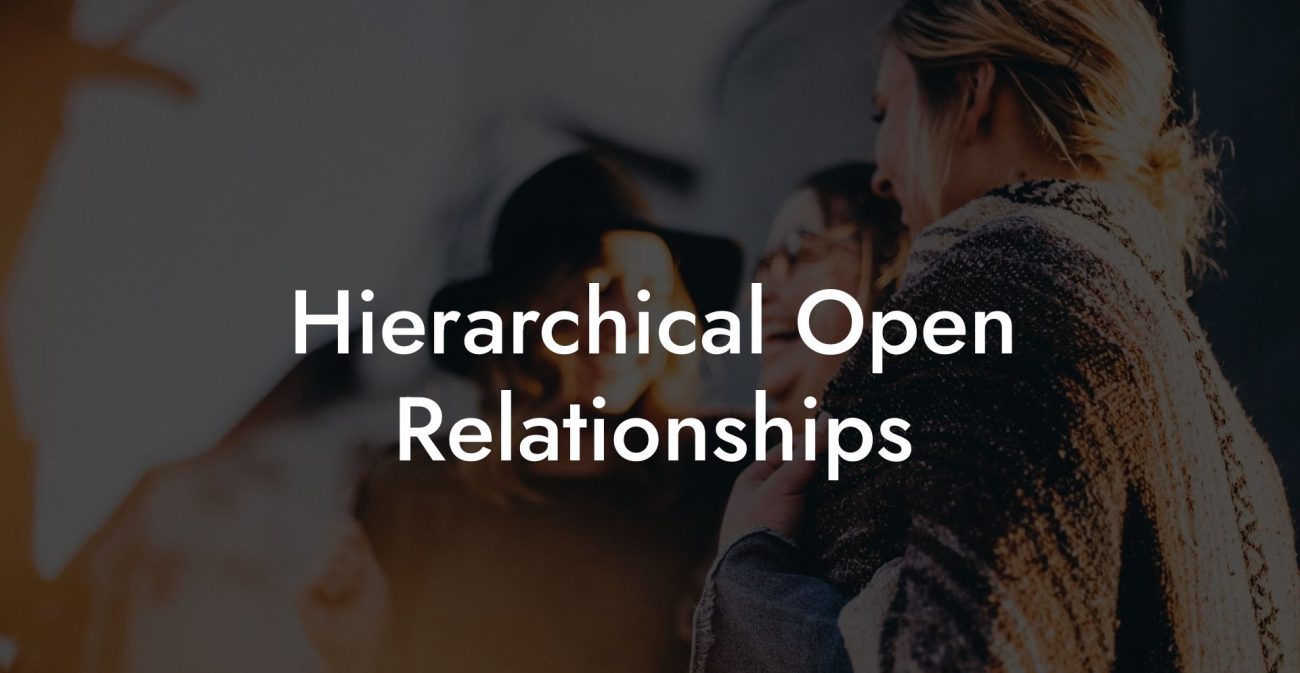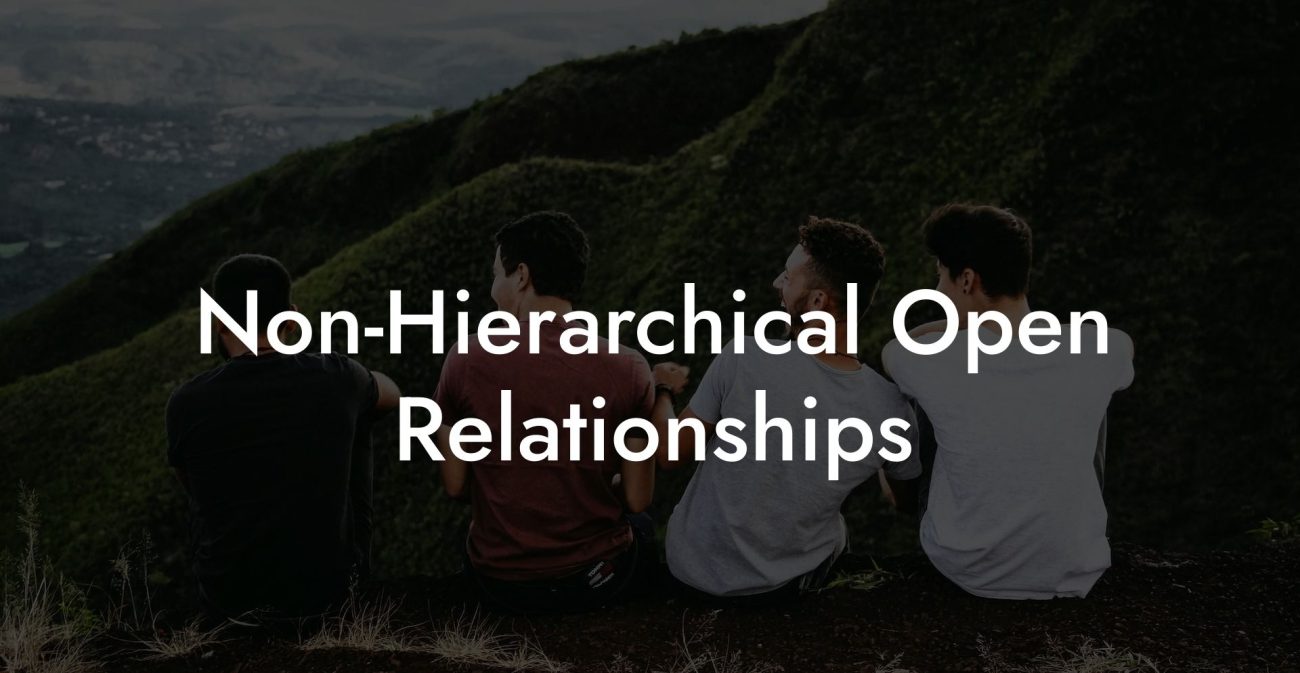Polyamorous Relationship vs Monogamy: Key Differences

Two of the most prominent and widely discussed relationship structures are polyamorous relationships and monogamous relationships. Although both models can provide deep emotional connections and fulfill romantic needs, they differ significantly in structure, commitment, communication, legal recognition, and social implications. This guide will explore each model in depth, compare their key features, and offer practical strategies for those considering which approach best aligns with their values, lifestyle, and relationship goals.
Quick Links to Useful Sections
- Understanding Monogamous Relationships
- Definition and Core Features
- Historical and Cultural Context
- Benefits of Monogamy
- Challenges of Monogamy
- Understanding Polyamorous Relationships
- Definition and Core Principles
- Variations Within Polyamory
- Benefits of Polyamorous Relationships
- Challenges of Polyamorous Relationships
- Key Differences Between Monogamous and Polyamorous Relationships
- Commitment and Exclusivity
- Structure and Dynamics
- Communication Requirements
- Legal and Social Recognition
- Emotional Dynamics
- Practical Considerations
- Self-Reflection and Personal Values
- Communication Strategies
- Boundary Setting
- Self-Care and Support Networks
- FAQ: Your Polyamorous Relationship vs Monogamy Questions Answered
Understanding Monogamous Relationships
Definition and Core Features
A monogamous relationship is defined as an exclusive partnership between two individuals who commit to being romantically and sexually involved only with each other. This model is the traditional and most widely accepted form of relationship in many cultures and legal systems. The core features of monogamy include:
- Exclusivity: Both partners agree to share their emotional and physical intimacy solely with one another.
- Long-Term Commitment: Monogamous relationships often involve a promise of long-term or lifelong commitment, frequently formalized through marriage.
- Legal Recognition: Monogamous marriages are legally recognized in nearly all countries, providing benefits such as inheritance rights, spousal benefits, and legal protections.
- Social Norms: monogamy is reinforced by cultural, religious, and societal expectations, which contribute to its widespread acceptance.
- Focused Emotional Connection: With an exclusive focus on one partner, couples often develop deep emotional bonds and strong trust.
Historical and Cultural Context
The predominance of monogamy in Western societies has historical roots tied to religious and legal frameworks. For centuries, religious teachings, especially those in Christianity, promoted monogamy as the ideal model for marriage and family. Legal systems evolved around this concept, creating institutions and norms that support exclusive, two-person unions. The cultural narrative of the nuclear family further solidified monogamy as the standard, offering a sense of security and stability.
Despite its benefits, some individuals in monogamous relationships eventually question whether an exclusive, two-person model fully meets their emotional or sexual needs, prompting interest in alternative relationship structures.
Benefits of Monogamy
Many couples find monogamous relationships deeply rewarding because of the intense intimacy and security they provide. Some of the main benefits include:
- Stability: A focused, exclusive relationship can create a stable foundation for emotional and financial planning.
- Legal Protections: Monogamous marriages enjoy well-established legal rights and benefits, which can help safeguard both partners.
- Deep Emotional Bond: The exclusivity in monogamy often fosters profound trust and intimacy between partners.
- Simplicity: With only two people involved, roles and responsibilities are typically straightforward, making communication and conflict resolution simpler.
Challenges of Monogamy
While monogamy offers many advantages, it can also present challenges:
- Emotional Stagnation: Over time, some couples may experience a decline in excitement or novelty, leading to feelings of boredom.
- Limited Diversity of Support: Relying solely on one partner for emotional and social support might leave some needs unmet.
- Pressure to Conform: Societal expectations can sometimes create pressure to maintain an exclusive bond even when personal growth or evolving needs suggest otherwise.
Understanding Polyamorous Relationships
Definition and Core Principles
Polyamorous relationships involve engaging in multiple consensual romantic or sexual relationships at the same time. The term "polyamory" comes from the Greek prefix "poly," meaning many, and the Latin "amor," meaning love, underscoring the belief that one can love more than one person simultaneously. Key principles include:
- Consensual Non-Monogamy: All parties are fully aware of and agree to the arrangement.
- Open Communication: Honest, continuous dialogue is essential to navigate boundaries, manage emotions, and coordinate multiple relationships.
- Flexibility: The structure of polyamorous relationships can vary widely, from non-hierarchical networks to arrangements with designated primary and secondary partners.
- Emotional Diversity: Polyamory allows individuals to draw on multiple sources of emotional and practical support, potentially enriching their personal and relational growth.
Variations Within Polyamory
Polyamorous relationships are not one-size-fits-all; they can take many forms, including:
- Hierarchical Polyamory: One relationship is designated as primary, with other connections seen as secondary. This model provides structure and clear prioritization.
- Non-Hierarchical Polyamory: All relationships are considered equal, and no single bond is given precedence over another.
- Solo Polyamory: Individuals maintain multiple relationships while prioritizing personal autonomy and independence, without a designated primary partner.
- Relationship Anarchy: A model that rejects traditional labels and hierarchies, allowing relationships to form organically based solely on mutual consent and personal desire.
Historical and Cultural Context
Although the term "polyamory" is relatively modern, the concept of forming multiple intimate connections has existed throughout history. Various cultures have practiced forms of non-monogamy, often without using the label polyamory, as a means to build extended support networks and share resources. Today, polyamory is gaining visibility as more people seek relationship models that offer emotional diversity and personal freedom.
Cultural acceptance of polyamory is growing, especially in progressive communities that value inclusivity and transparency in relationships.
Benefits of Polyamorous Relationships
Polyamorous relationships offer a range of benefits:
- Diverse Emotional Support: Multiple partners can meet different emotional needs, providing a richer network of support.
- Personal Growth: The dynamic nature of polyamory encourages self-awareness, improved communication skills, and emotional resilience.
- Flexibility: Polyamory allows for a variety of relationship structures, giving individuals the freedom to tailor connections to their personal needs.
- Exploration of Intimacy: Individuals can experience different types of intimacy and care, which may lead to a deeper understanding of themselves and their desires.
Challenges of Polyamorous Relationships
Polyamory also comes with its own set of challenges:
- Emotional Complexity: Balancing the emotional needs of multiple relationships requires advanced communication and conflict resolution skills.
- Jealousy and Insecurity: Managing feelings of jealousy can be more complex in polyamorous networks, requiring ongoing self-reflection and negotiation.
- Time Management: Allocating sufficient time and energy to nurture multiple connections can be challenging.
- Social Stigma: Despite increasing acceptance, polyamorous individuals may still face prejudice and misunderstanding from those who adhere to traditional monogamous values.
Key Differences Between Monogamous and Polyamorous Relationships
Commitment and Exclusivity
Monogamy: Emphasizes an exclusive, one-on-one bond where both partners commit to each other entirely. This model focuses on deep emotional intimacy and a singular connection.
Polyamory: Involves multiple concurrent relationships, each with its own level of commitment. While some polyamorous arrangements may include a primary partnership, others operate on an egalitarian basis where no single relationship is considered superior.
Structure and Dynamics
Monogamy: Generally features a clear, structured dynamic that is socially and legally recognized. The roles, responsibilities, and expectations are typically well-defined.
Polyamory: Is more fluid and varied, with relationship structures that can be hierarchical, non-hierarchical, or even solo. The dynamics in polyamory require ongoing negotiation and flexibility to adapt to the needs of all partners.
Communication Requirements
Monogamy: Involves focused, bilateral communication that centers on deepening the bond between two people. While conflicts may arise, they are generally managed through direct dialogue.
Polyamory: Demands robust, multi-directional communication among all partners. Negotiating boundaries, addressing jealousy, and coordinating multiple relationships require a higher level of transparency and continuous discussion.
Legal and Social Recognition
Monogamous Relationships: Are widely recognized and supported by legal frameworks, cultural norms, and religious institutions, providing couples with various legal rights and social benefits.
Polyamorous Relationships: Typically lack formal legal recognition, which can affect matters like inheritance, custody, and healthcare benefits. Social acceptance is growing, but polyamory still faces challenges due to traditional norms.
Emotional Dynamics
Monogamy: Focuses on a concentrated emotional connection, which can lead to a deep sense of trust and security. However, relying solely on one partner for emotional support may also limit diversity in emotional experiences.
Polyamory: Offers a varied emotional support network from multiple partners, which can enrich personal growth and provide a broader range of intimacy. At the same time, it requires managing complex feelings such as jealousy and the need for balanced attention.
Practical Considerations
Self-Reflection and Personal Values
When deciding between monogamy and polyamory, self-reflection is key. Consider your personal values and what you seek in a relationship:
- Do you prefer an exclusive, focused bond or a diverse network of emotional connections?
- How do you handle complex emotions like jealousy and insecurity?
- What level of legal and social support do you need?
- How important is flexibility and personal freedom in your romantic life?
Communication Strategies
Effective communication is essential in both models. Monogamous couples can benefit from regular check-ins and open discussions about expectations and goals. In polyamorous relationships, clear and continuous dialogue among all partners is crucial to ensure that boundaries are respected and emotions are managed.
- Practice active listening and empathy.
- Schedule regular, dedicated conversations.
- Use digital tools like shared calendars and group chats to coordinate schedules.
Boundary Setting
Whether you choose monogamy or polyamory, establishing clear boundaries is fundamental. In a monogamous relationship, boundaries may revolve around exclusivity and shared responsibilities. In polyamorous relationships, boundaries need to be negotiated among all partners to ensure that each person’s needs are met.
- Define expectations early in the relationship.
- Revisit and adjust boundaries as circumstances change.
- Ensure that all parties have an equal voice in setting these limits.
Self-Care and Support Networks
Taking care of your emotional and physical well-being is essential, regardless of your relationship model. Regular self-care and building a supportive community can help you manage stress and maintain a healthy relationship dynamic.
- Engage in activities that recharge you, such as exercise, hobbies, or meditation.
- Consider professional counseling to improve emotional intelligence and communication skills.
- Join online forums and local groups that support your chosen lifestyle.
FAQ: Your Polyamorous Relationship vs Monogamy Questions Answered
1. What is a monogamous relationship?
A monogamous relationship is an exclusive partnership between two individuals, characterized by emotional, romantic, and sexual commitment to one another.
2. What is a polyamorous relationship?
A polyamorous relationship involves engaging in multiple consensual romantic or sexual relationships simultaneously, with open communication and negotiated boundaries.
3. How do the commitment levels differ between these models?
Monogamous relationships are centered on an exclusive, one-on-one bond, whereas polyamorous relationships involve multiple connections, each with its own level of commitment and importance.
4. What are the legal differences between monogamy and polyamory?
Monogamous marriages are legally recognized and come with various rights and benefits, while polyamorous relationships generally lack formal legal recognition, which can affect issues like inheritance and custody.
5. How do communication requirements differ?
Monogamous relationships typically involve focused, bilateral communication, whereas polyamorous relationships require ongoing, multi-directional dialogue to manage multiple connections and negotiate boundaries.
6. What are some emotional differences between the two models?
Monogamy often fosters a deep, exclusive emotional bond between two people, while polyamory provides a diverse network of emotional support but also requires advanced skills to manage complex emotions such as jealousy.
7. Where can I find additional resources on these topics?
Additional resources include books such as "The Ethical Slut" by Dossie Easton & Janet Hardy and "More Than Two" by Franklin Veaux & Eve Rickert, podcasts like "Multiamory" and "Polyamory Weekly," and online communities such as r/polyamory.
Resources and Community Support: Your Next Steps
- "The Ethical Slut" by Dossie Easton & Janet Hardy – A foundational text on ethical non-monogamy offering valuable insights into both monogamous and polyamorous relationship models.
- "More Than Two" by Franklin Veaux & Eve Rickert – A guide providing practical advice on managing multiple relationships and understanding the nuances between monogamy and polyamory.
- Podcasts: Listen to "Multiamory" and "Polyamory Weekly" for engaging discussions and real-life stories about various relationship structures.
- Online Communities: Join forums such as r/polyamory and other social media groups to exchange ideas and receive support.
- Workshops and Webinars: Attend events focused on relationship psychology and ethical non-monogamy to expand your knowledge and connect with like-minded individuals.
By exploring these resources and applying the strategies outlined in this guide, you can develop a clear and informed understanding of the key differences between open relationships and monogamy. Embrace continuous learning, open dialogue, and self-reflection as you navigate the diverse landscape of intimacy and commitment.
Lost & confused by all of the terms, types and seemingly made up 3 letter acronyms?? We've got you. Check out our Ethnical Non-Monogamy Dictionary >>
Useful Interruption: Not sure which relationship vibe fits you best? Take our Relationship Test, it’ll give you the real insight into your natural relationship style. Then, dive into our binge-worthy guides (from the tried-and-true to the “wait, that’s a thing?”) and find the perfect relationship type for your life:
- Monogamy
- Open Relationships
- Ethical Non-Monogamy
- Solo Polyamory
- Non-Hierarchical Polyamory
- Hierarchical Polyamory
- Relationship Anarchy
- Swinging
Now back to the main article but yeah take the test...












